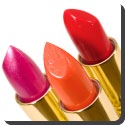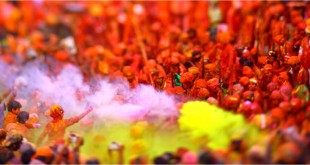 Ancient Mesopotamian women were possibly the first women to invent and wear lipstick. They crushed semi precious jewels and used them to decorate their lips. Women in the ancient Indus Valley Civilization applied lipstick to their lips for face decoration. Ancient Egyptians extracted purplish-red dye from fucus-algin, 0.01% iodine, and some bromine mannite, which resulted in serious illness. Cleopatra had her lipstick made from crushed carmine beetles, which gave a deep red pigment, and ants for a base. Lipsticks with shimmering effects were initially made using a pearlescent substance found in fish scales.
Ancient Mesopotamian women were possibly the first women to invent and wear lipstick. They crushed semi precious jewels and used them to decorate their lips. Women in the ancient Indus Valley Civilization applied lipstick to their lips for face decoration. Ancient Egyptians extracted purplish-red dye from fucus-algin, 0.01% iodine, and some bromine mannite, which resulted in serious illness. Cleopatra had her lipstick made from crushed carmine beetles, which gave a deep red pigment, and ants for a base. Lipsticks with shimmering effects were initially made using a pearlescent substance found in fish scales.
During the Islamic Golden Age the notable Arab Andalusian cosmetologist Abu al-Qasim al-Zahrawi (Abulcasis) invented solid lipsticks, which were perfumed sticks rolled and pressed in special molds, and he described them in his Al-Tasrif. In Medieval Europe, lipstick was banned by the church and was thought to be used as an ‘incarnation of Satan’, cosmetics being ‘reserved’ for prostitutes.
 Kids Portal For Parents India Kids Network
Kids Portal For Parents India Kids Network






